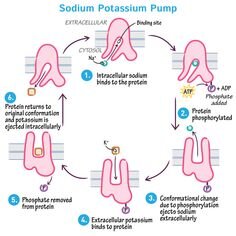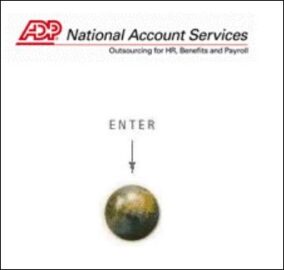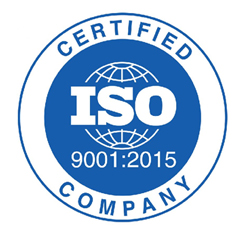Accounting for Dividend Received: Definition, Example, and Journal Entries

Verizon is investing heavily in its 5G network, which promises faster speeds, lower latency, and higher capacity than 4G. The telecom giant plans to leverage its best-in-class wireless network to steadily raise average revenue per account over time. The drawback is that AbbVie’s aggressive dealmaking has created a sizable debt overhang for the company.
- Dividend yield is a way of understanding the relative value of a company’s dividend payment.
- For example, Microsoft paid a one-time dividend of $3 per share in 2004, equal to $32 billion.
- Since Retained Earnings is a component of stockholders’ equity, the declaration and payment of a dividend reduces the corporation’s assets and its stockholders’ equity.
Declaration date is the date that the board of directors declares the dividend to be paid to shareholders. It is the date that the company commits to the legal obligation of paying dividend. Hence, the company needs to make a proper journal entry for the declared dividend on this date. And as with debiting the retained earnings account, you’ll credit the total declared dividend value.
How to calculate dividends from the balance sheet and income statement
However, they allow companies more flexibility in how they pay their shareholders. Dividends represent the distribution of the company’s profits to a class of its shareholders. Usually, the board of directors approves a company’s dividends that it must pay to its shareholders. However, the shareholders of the company must also approve of the dividends before the company pays them. For the shareholders, dividends represent a type of reward, mostly in cash, that the company pays them for their investment.

A real estate investment trust (REIT) owns or operates income-producing real estate. To be classified as a REIT, 90% of the taxable income these companies earn each year must be paid out in the form of dividends, and 20% of those dividends must be paid as cash. In general, if you own common or preferred stock of a dividend-paying company on its ex-dividend date, you will receive a dividend.
Dividend declared journal entry
However, Verizon faces intense competition from its rivals AT&T and T-Mobile. As a result, most analysts don’t expect Verizon to be a top growth stock over the balance of the decade. In 2024, for instance, Wall Street expects the company to increase annual revenue by a meager 1.6%.
For example, they can calculate the dividends of a company through the changes in its retained earnings. They can also use specific ratios, such as the dividend payout ratio or dividend yield of a company to calculate its dividends. The dividend rate can be quoted in terms of the dollar amount each share receives as dividends per share (DPS). In addition to dividend yield, another important performance measure to assess the returns generated from a particular investment is the total return factor. This figure accounts for interest, dividends, and increases in share price, among other capital gains.
These include constant, residual, and stable dividend policies, based on different theories. Regular dividend payments should not be misunderstood as a stellar performance by the fund. Companies structured as master limited partnerships (MLPs) and real estate investment trusts (REITs) require specified distributions to shareholders.
- The most commonly accepted definition involves calculating the payout ratio, which is used to estimate the dividend’s sustainability over time and the related growth in the payout rate.
- Therefore, companies regard dividend policy as an important part of their relationship with their shareholders.
- In the case of publicly-traded security, dividends are reported on the income statement in the “distributions to shareholders” account.
- Funds employ the principle of net asset value (NAV), which reflects the valuation of their holdings or the price of the assets that a fund has in its portfolio.
- While shares of common stock always have voting rights, if they offer a dividend it isn’t guaranteed.
As a result, it won’t be able to easily change course via additional business development activity in the event its pipeline efforts fail to cover Humira’s commercial decline. AbbVie is a biopharmaceutical company that develops and sells drugs for various therapeutic areas, such as immunology, oncology, neuroscience, and medical aesthetics. The company is best known for its blockbuster drug Humira, which treats various inflammatory diseases and has consistently been one of the world’s best-selling drugs over the past decade.
Markets
In contrast, cash flow accounting only considers actual dividend payments received by shareholders during the period under analysis. Dividends are a form of income that shareholders of corporations receive for each share of stock that they hold. These payments — from a corporation’s profits or from its accumulated retained earnings — are in cash or other assets (excluding the corporation’s own stock). The definition automatic data processing, inc of dividends in the System of National Accounts 2008 (SNA) — the international guidelines for national accounting — is consistent with this definition. On the dividend payment date, the cash is paid out to shareholders to settle the liability to them, and the dividends payable account balance returns to zero. A company may issue a non-monetary dividend to investors, rather than making a cash or stock payment.
However, it may end up negatively impacting a company that has had low profits or even losses. Companies adopt a constant dividend policy when they want to pay a percentage of their profits as dividends for every period. First of all, this dividend policy allows shareholders to benefit from increasing profits of a company, thus, allowing them to earn higher in times of increasing profits. However, they may also be at a disadvantage as it also means they may earn lower or, sometimes, nothing when the profits of the company are declining. Dividends paid in cash are the most common and also preferred by shareholders. However, some companies may also pay their shareholders in other forms such as stock.
How Dividend is Calculated?
Because they often own dividend stocks, mutual funds and exchange-traded funds (ETFs) may distribute dividend payments to their shareholders. If you own an ETF or mutual fund, you’ll receive your portion of the fund’s dividend income based on the number of shares you own and the company’s representation in the fund. An S&P 500 fund, for example, might pay a dividend yield of 1.77% while some companies within the S&P 500, like Kohl’s, offer dividend yields above 13% (more on yields below). Accounting for dividend payments is a critical part of the cash flow process in any business. The company must remove the amount paid from its retained earnings account and credit it to the stockholders’ equity account when the payment is made. This allows the company to track how much its profits are distributed to shareholders.
These companies have increased their dividends every year for 50+ years. The calculation can be done on a per share basis by dividing each amount by the number of shares in issue. Whenever a company earns a profit, there are only two uses in which it can be reused. Dividends are taxed based on whether they’re qualified dividends or ordinary dividends. In this situation, the date the liability will be recorded in Your Co.’s books is March 1 — the date of the Board’s original declaration. Despite the challenges posed by Humira’s patent expiration, however, AbbVie’s management expects to deliver strong earnings growth in the back half of the decade.
Secondly, it helps them keep track of their expenses when they have shareholders that need to be compensated. Lastly, accounting for stockholders’ dividends allows them to determine whether or not their company is doing well financially. Whether or not the company has enough cash on hand to distribute a dividend, it must remove the amount distributed from retained earnings and add it to stockholders’ equity. The amount of the dividend per share must be determined before it can be recorded in the P&L. This amount depends on whether the dividend is classified as a cash or stock dividend, whether it is a regular or special dividend and whether it will be split. Still, some investors are skeptical an economic soft landing would be particularly beneficial for dividend-payers.
Winter heat wave in Chile offers ‘window’ to warmer world
Funds may also issue regular dividend payments as stated in their investment objectives. A dividend is a reward paid to the shareholders for their investment in a company’s equity, and it usually originates from the company’s net profits. Though profits can be kept within the company as retained earnings to be used for the company’s ongoing and future business activities, a remainder can be allocated to the shareholders as a dividend. A dividend is the distribution of a company’s earnings to its shareholders and is determined by the company’s board of directors. Dividends are often distributed quarterly and may be paid out as cash or in the form of reinvestment in additional stock. Those companies issuing dividends generally do so on an ongoing basis, which tends to attract investors who seek a stable form of income over a long period of time.
Assuming it pays dividends in the form of cash, the company must credit its cash account, while also eliminating the balance in the dividends payable account created before. For instance, when the company in the above example pays its shareholders dividends of $10,000, it must use the following accounting treatment to record the transaction. One of the most common questions received by accountants today is how to handle dividend payments, especially in a closely held corporation. As you know, dividends are the payments made by corporations to their shareholders out of company earnings, generally considered taxable income by the IRS. Mostly, companies pay dividends to their shareholders annually, after the end of each accounting period.
Yield is expressed as a percentage, and it lets you know what return on investment you’re making when you earn a dividend from a given company. These traits make REIT stocks attractive choices for investors who want reliable dividend income and high yields. REITs offer an average dividend yield of 3.8%, more than double what you might get from an S&P 500 fund. REITs focusing on certain sectors, like mortgages, may even offer higher yields. On average, dividend-paying stocks return 1.91% of the amount you invest in the form of dividends, which can provide a higher return than some high-yield savings accounts. Dividend stocks do not offer the same security of principal as savings accounts, though.
Paying Dividends – Ohio Wesleyan University
Paying Dividends.
Posted: Mon, 17 Jul 2023 07:00:00 GMT [source]
In the case of publicly-traded security, dividends are reported on the income statement in the “distributions to shareholders” account. This account records all dividends paid by the company to its stockholders during a given period. Accounting for dividends is necessary to maintain the company’s financial health and satisfy shareholders. Retaining earnings can lead to growth, but it also means that the company has less cash on hand. If you have substantial retained earnings, your company might be hesitant to pay out that money in dividends for fear of having insufficient funds for future buying opportunities. It is important to note that the dividends declared and paid by a corporation are not an expense of the corporation.
However, a reduction in dividend amounts or a decision against a dividend payment may not necessarily translate into bad news for a company. The company’s management may have a plan for investing the money such as a high-return project that has the potential to magnify returns for shareholders in the long run. Companies may still make dividend payments even when they don’t make suitable profits to maintain their established track record of distributions. Some may have unsustainable payouts, declining businesses, or high debt levels that could jeopardize their dividends in the future. Therefore, it is important to do your homework and pick high-quality companies that can maintain or grow their dividends over time. When the board of directors declares a dividend, it will result in a debit to Retained Earnings and a credit to a liability such as Dividends Payable.

Special dividends are not a commitment by a company to continue offering dividend payment at that rate. For example, Microsoft paid a one-time dividend of $3 per share in 2004, equal to $32 billion. Dividends represent the reward that a company pays to its shareholders in exchange for their investment.


Leave a Reply
Want to join the discussion?Feel free to contribute!